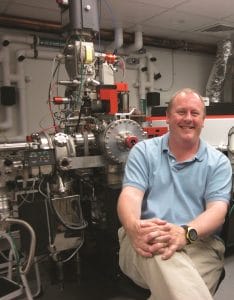As a geologist, Hauri studied rocks; it’s where the rocks were that is the interesting part. A researcher at Washington D.C.’s Carnegie Institution for Science for 24 years, Hauri challenged the assumption that the moon is “bone dry” — as thought for decades. Samples of moon rocks brought back by Apollo astronauts had only minute traces of water, according to early analysis. It took Hauri and his team three years to get some lunar soil to test, but NASA finally loaned a “thimble-sized” sample collected by Apollo 15 and 17 astronauts. Using research techniques he developed himself, Hauri proved that the lunar soil samples had about 100 times the water than previously believed.

More importantly, his research showed that subsurface lunar rocks had about the same water content as similar rocks on Earth. “If you take our measurements and use them to estimate the water content of the interior of the moon,” he said in 2011, “you arrive at a volume of water that’s equivalent to the Mediterranean Sea. Now that’s a fair bit of water.” Who cares? Access to a water supply will someday help humans establish a colony on the moon. In addition, in 2013 Hauri was able to prove that the water on the moon came from Earth — not, say, from comets, thus confounding a theory that when the moon was sheared off of Earth from a large body impact 4.5 billion years ago, any water present boiled off from the heat resulting from that impact. Other researchers are working to figure out how it survived. Dr. Hauri died at home on September 5, from cancer. He was 52.
